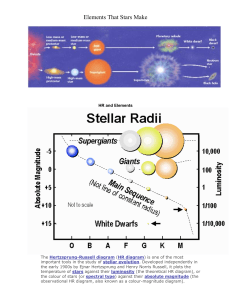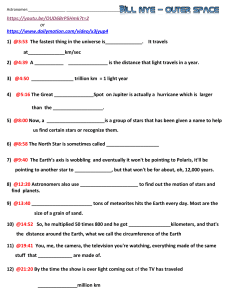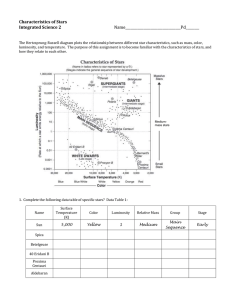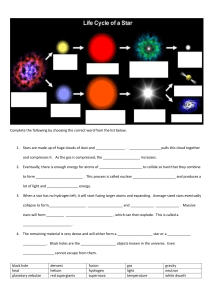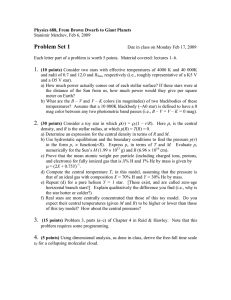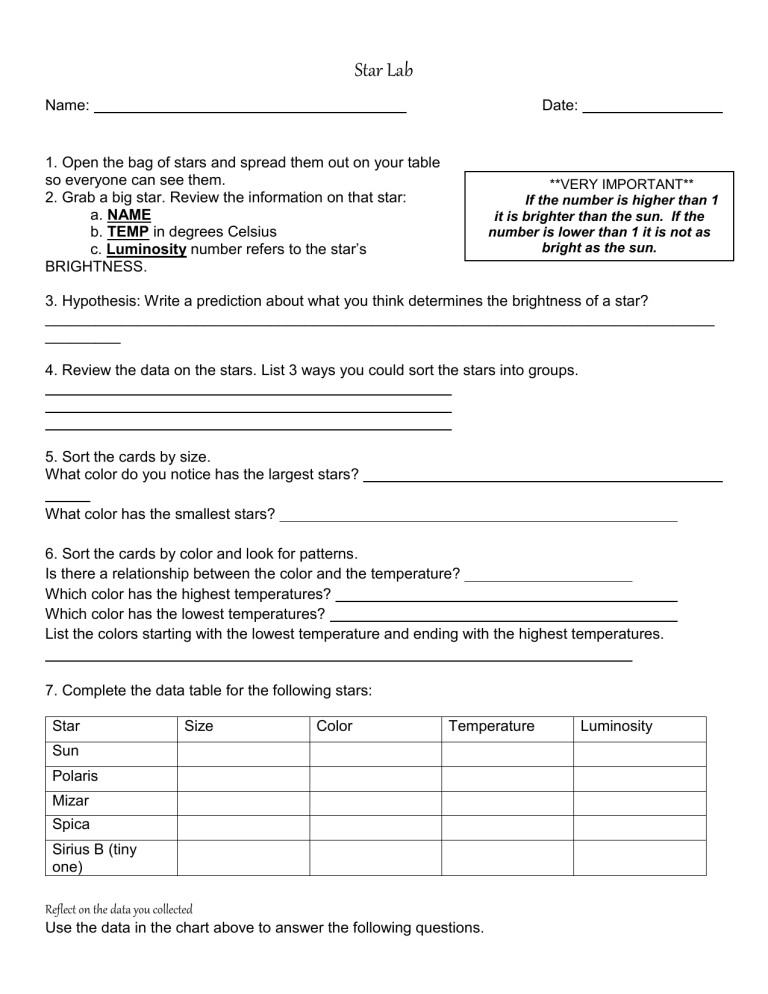
Star Lab Name: Date: 1. Open the bag of stars and spread them out on your table so everyone can see them. 2. Grab a big star. Review the information on that star: a. NAME b. TEMP in degrees Celsius c. Luminosity number refers to the star’s BRIGHTNESS. **VERY IMPORTANT** If the number is higher than 1 it is brighter than the sun. If the number is lower than 1 it is not as bright as the sun. 3. Hypothesis: Write a prediction about what you think determines the brightness of a star? ________________________________________________________________________________ _________ 4. Review the data on the stars. List 3 ways you could sort the stars into groups. 5. Sort the cards by size. What color do you notice has the largest stars? What color has the smallest stars? 6. Sort the cards by color and look for patterns. Is there a relationship between the color and the temperature? Which color has the highest temperatures? Which color has the lowest temperatures? List the colors starting with the lowest temperature and ending with the highest temperatures. 7. Complete the data table for the following stars: Star Size Color Temperature Sun Polaris Mizar Spica Sirius B (tiny one) Reflect on the data you collected Use the data in the chart above to answer the following questions. Luminosity 1. How are the sun and Polaris the same? (over) 2. The Sun and Polaris are close to the same temperature. Why do you think Polaris so much brighter than the Sun? 3. What does the Sun, Mizar, and Spica have in common? Why do you think their aren’t their luminosities the same? ____________ 4. What does Aldebaran and Eridani have in common? Why are their luminosities different? 5. Based on the above – what two characteristics (size, color or temp) of star do you think affect the luminosity of the star the MOST?
